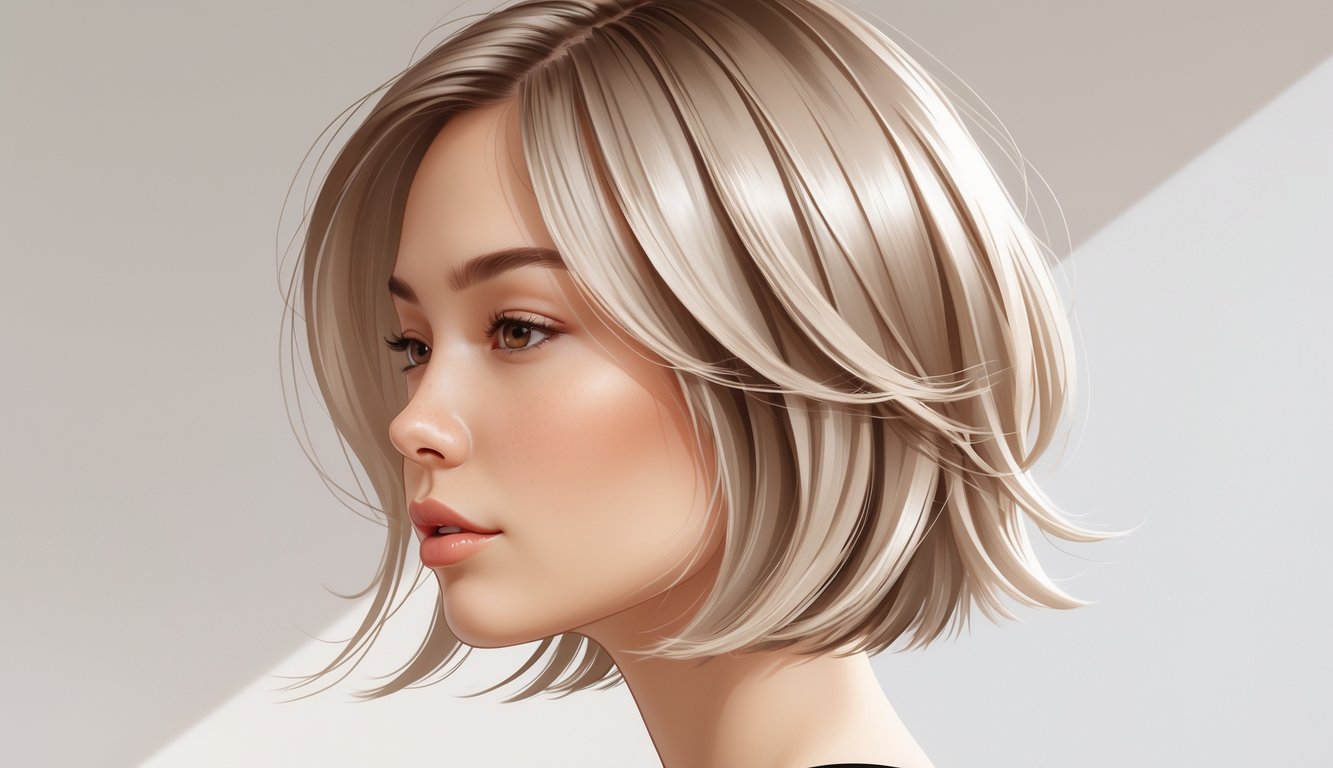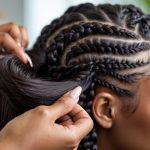
Bang Integrations
Let’s be real—everyone’s obsessed with blending bangs into faded layers, but half the time, my curtain bangs split by lunchtime and I look like I lost a fight with a fan. But pros swear that soft fringe plus gentle, descending layers = face framing without that cringey, chunky school-photo vibe. Hair mags keep saying, “Bangs are best when they taper into layered cuts for less upkeep.” Maybe, unless your cowlick has other plans.
The real trick? It’s all in the cut. My stylist carves little micro-layers by my cheekbones, so the short bits melt into the rest. Even when I tie my hair up, I get a soft fall around my face, not that “oops, grew out my bangs” look.
Random thing: forehead sweat is real in summer, but with faded layers, less hair sticks to your skin. Still, nobody warns you that humidity can make “subtle” go full-on puffy. It’s not perfect. It’s just easier to fix, and if you shove them back, nobody can tell.
Consultation and Customization Strategies
Who decided there’s a single formula for haircuts? Face shape, whatever, sometimes I think stylists forget people even have chins or foreheads. Split ends? They’re like gremlins, always lurking. Nobody wants to chop off all their length and start over, that’s for sure.
Understanding Face Shape
Square jaw, round cheeks, pointy nose—mirror anxiety, anyone? People walk in and say, “Just do layers, but not chunky,” and then ignore that a round face can drown in too many choppy bits. Long faces? Need a horizontal break somewhere, or you end up looking like a stretched-out Polaroid.
A good stylist is basically a detective—measuring jaws, squinting at recession corners, sighing a lot. I’ve had to explain that the sleek ghost layer trend isn’t about “contouring” your face, it’s just about not making your features look weird. (If you want details, Byrdie explains how ghost layers for subtle volume actually work.) But let’s be honest, clients bring in ten Pinterest screenshots and not one matches their face.
Universal answer? Nope. Sometimes I just sketch a terrible diagram so people get the idea. Best hack: cut a tiny, hidden snip by the jaw and show them before going all in. Not magic, just slow, careful work. Instagram makes this look way easier than it is.
Personalizing for Hair Lengths
Short bob, mermaid hair, curly shoulder thing—layering is all about gravity and memory. Did you know fine hair remembers every bad cut? I learned that the hard way, thanks to a stubborn cowlick. For long hair, “invisible” or “ghost” layers mean slicing under the top layer so the shape stays smooth. Nobody expects that when they say “not too short.” Texturizing scissors and a steady hand, that’s my toolkit.
Drastic change? I never do it all at once. If you want people to come back, take it slow. For thick hair, I don’t thin out the ends—blunt edges need to stay or the whole thing turns to fluff. ARC Scissors blog says these invisible layers aren’t really invisible, so where you put them matters a lot. Here’s my cheat sheet, mostly so clients don’t freak out mid-cut:
| Hair Length | Layering Priority | My Go-To Tool |
|---|---|---|
| Short/Pixie | Volume up top | Point-cutting shears |
| Medium | Seamless movement | Texturizing razor |
| Long | Shape, keep length | Blending scissors |
Most clients only notice the difference after a few washes—suddenly their hair falls differently. Also, why do shampoo bottles still promise volume that only a good cut can give?
Addressing Split Ends and Hair Health
Split ends are the worst. No, your miracle serum isn’t fixing them. Every stylist with a brain knows splits lurk everywhere, no matter your length. People think they can skip trims with invisible layers—nope, hair health still tanks.
One nutritionist told me to eat more eggs for protein. Cool, but if my flat iron is frying my ends, I’m still trimming every 8 weeks. Some products help, but only so much. Sometimes I’ll literally put hair clippings under a magnifier for clients—nothing like horror to convince someone to get a trim. HerStyleCode goes into how ghost layers can be customized but still says you need regular trims.
If you love balayage and heat styling? Double the vigilance. I’ve straight-up refused to add more layers until someone deals with their split ends. Not to be dramatic, but healthy ends actually matter, even if your haircut is subtle.
The Role of Professional Hairstylists
No one tells you the real secret is dodging bad cuts and finding someone who doesn’t just nod and snip whatever you said. I heard once that celebrity stylists carry, like, six pairs of shears for layering. For hair. Not heart surgery.
Choosing the Right Specialist
I used to think a fancy blowout meant a good stylist. Nope. How do you even pick someone who gets subtle, faded layers? Not the ones who chop everything and call it a day. It’s like picking a dentist—you want receipts, portfolios, the whole thing. And honestly? Stalk their work.
I fell down a Reddit rabbit hole once, and wow, apparently stylists get weird if you’re vague. Here’s the thread. The good ones listen, care about layers and face shape, and actually have before-and-after pics. Not being “extra,” just actually invested. I trust stylists who talk technique—dry cutting, angles, weight. If you don’t hear any technical talk, maybe run.
Communication and Expectations
I’ve fumbled through so many consults, half-sure I was saying the wrong thing. “Subtle graduation” does not mean a staircase on my head. This LA stylist told me, “Always use photos, never adjectives.” Wise words—who can really describe the difference between ‘softly faded’ and ‘feathered’ with words alone?
The best pros grab their Hanzo shears and actually check, “Is this what you mean?” They’re not mind readers. The right stylist checks expectations with photos, questions, even mannequin heads. One friend swears by stylists who use mirrors and hand signals—like air traffic control for hair. It works. I finally got layers, not just random short pieces.



